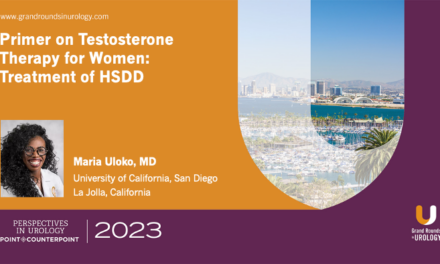Daniel Kelly, PhD, presented “The Science of Testosterone and Atherosclerosis” for the Grand Rounds in Urology audience in July 2021.
How to cite: Kelly, Daniel. “The Science of Testosterone and Atherosclerosis” July 2021. Accessed Apr 2024. https://grandroundsinurology.com/the-science-of-testosterone-and-atherosclerosis/
The Science of Testosterone and Atherosclerosis – Summary:
Daniel Kelly, PhD, Senior Lecturer of Biochemistry at Sheffield Hallam University, outlines and reviews data on testosterone’s impact on atherosclerosis. He outlines the key stages of atherosclerosis: monocyte activation, monocyte activation/adhesion, monocyte migration, and macrophage activation. Dr. Kelly then discusses how testosterone impacts each stage with supporting studies. The STRIDE study demonstrated that testosterone reduces the atherogenic cytokine TNFα in the isolated monocytes of diabetic men. Dr. Kelly examines data showing that testosterone may reduce monocyte infiltration but may also promote monocyte adhesion. He explains that overexpression of LOX-1 is associated with lipid-laden foam cell formation and the enhancement of a pro-inflammatory phenotype in macrophages during activation. Citing a study on rabbit and mice cells, he notes about a 50% increase in LOX-1 lesion area in castrated rabbits and about a 15-20% reduction in foam cell formation area in mice cells treated with testosterone. Another study shows that testosterone promotes cholesterol clearance from lipid-laden macrophage cell lines of about 25%. Dr. Kelly reviews a study showing that esterified and non-esterified cholesterol were seen to be reduced by about 20% following testosterone treatment. He concludes that T has a complex role in treating atherosclerosis that is context-bound, depending on the stage and location of the disease.



